This is how I overwinter geraniums to keep my plants safe in cold weather
Learn how to overwinter geraniums in just a few simple steps and you can protect your pelargoniums from the winter weather
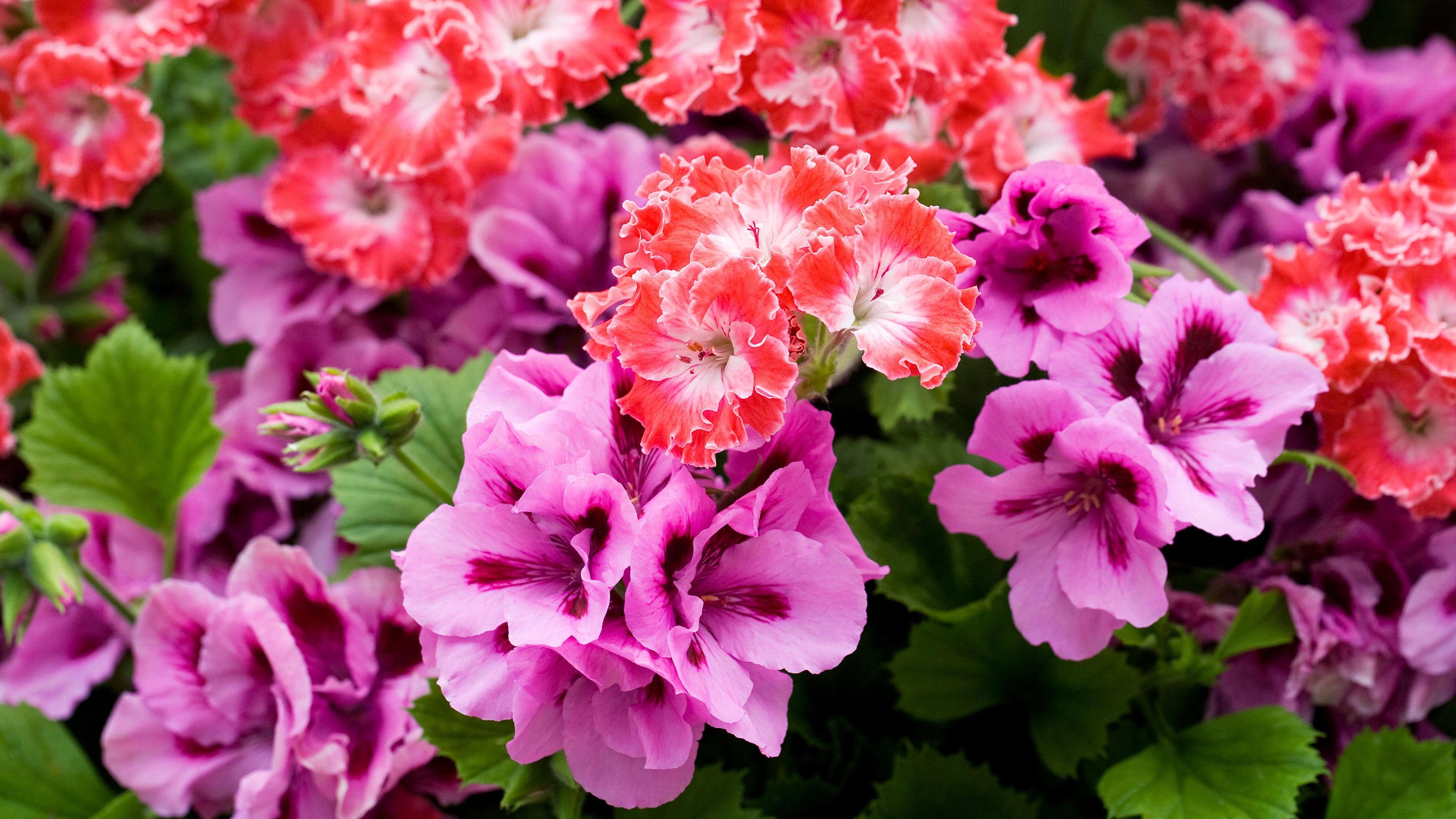

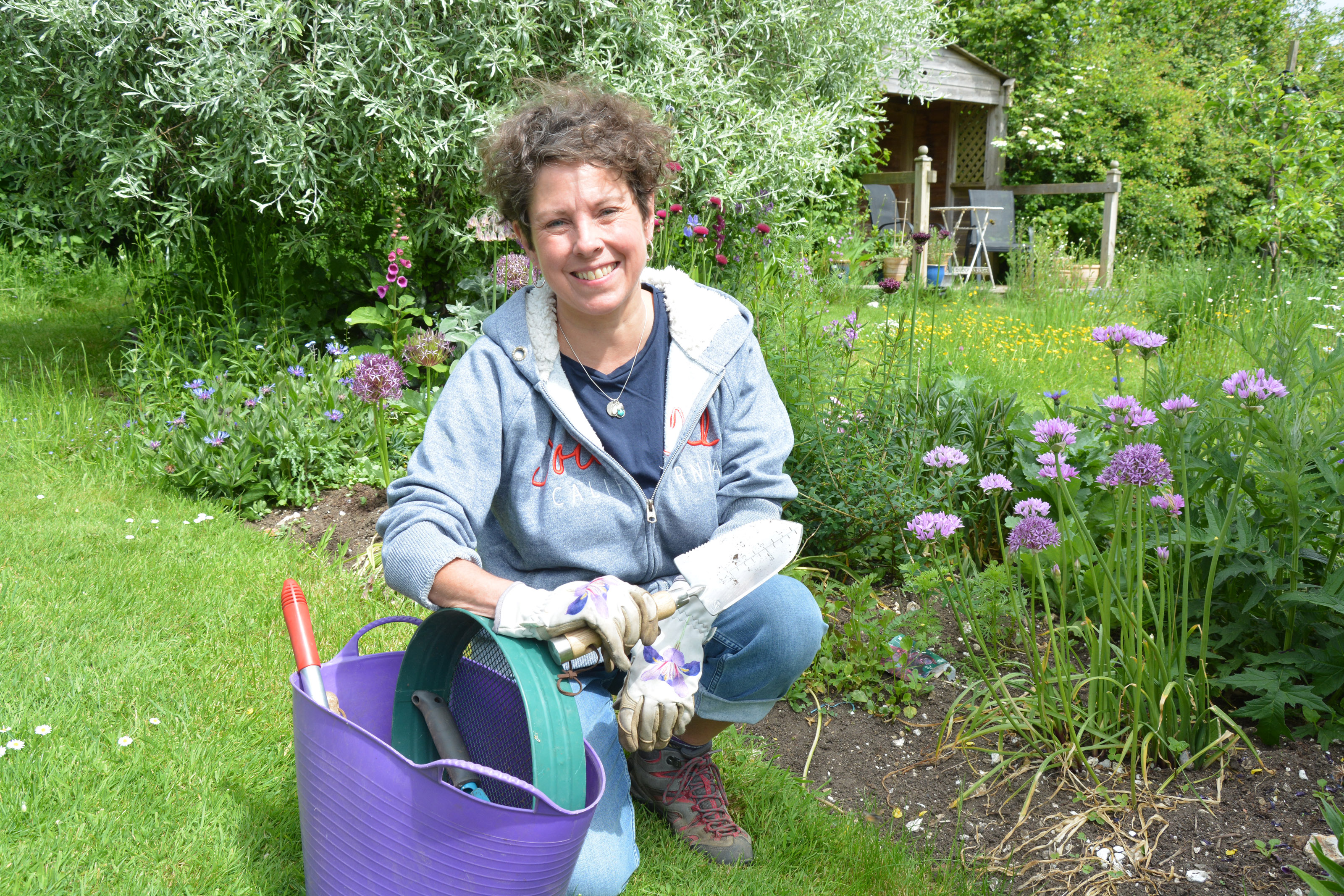
How to overwinter geraniums is one of gardening's most asked questions because so many of us grow them.
These tender perennials, also known as pelargoniums, are indispensable when planning your garden thanks to their pink, red and white petals that make them one of the best plants for long-lasting summer color in borders and planters.
They are easy to cultivate, happy in most soils, undemanding and relatively problem-free. But because they are tender, they need extra care during the colder months.
I live on the relatively mild south coast of England, which gives me enviable versatility when it comes to winterizing geraniums. Larger ones can risk staying outside in a sheltered spot, while I move smaller plants into the frost-free greenhouse for the colder months.
But not everyone is this lucky and if you live in colder or more exposed regions, you will need to protect your plants from frost and give your geraniums some extra winter care.
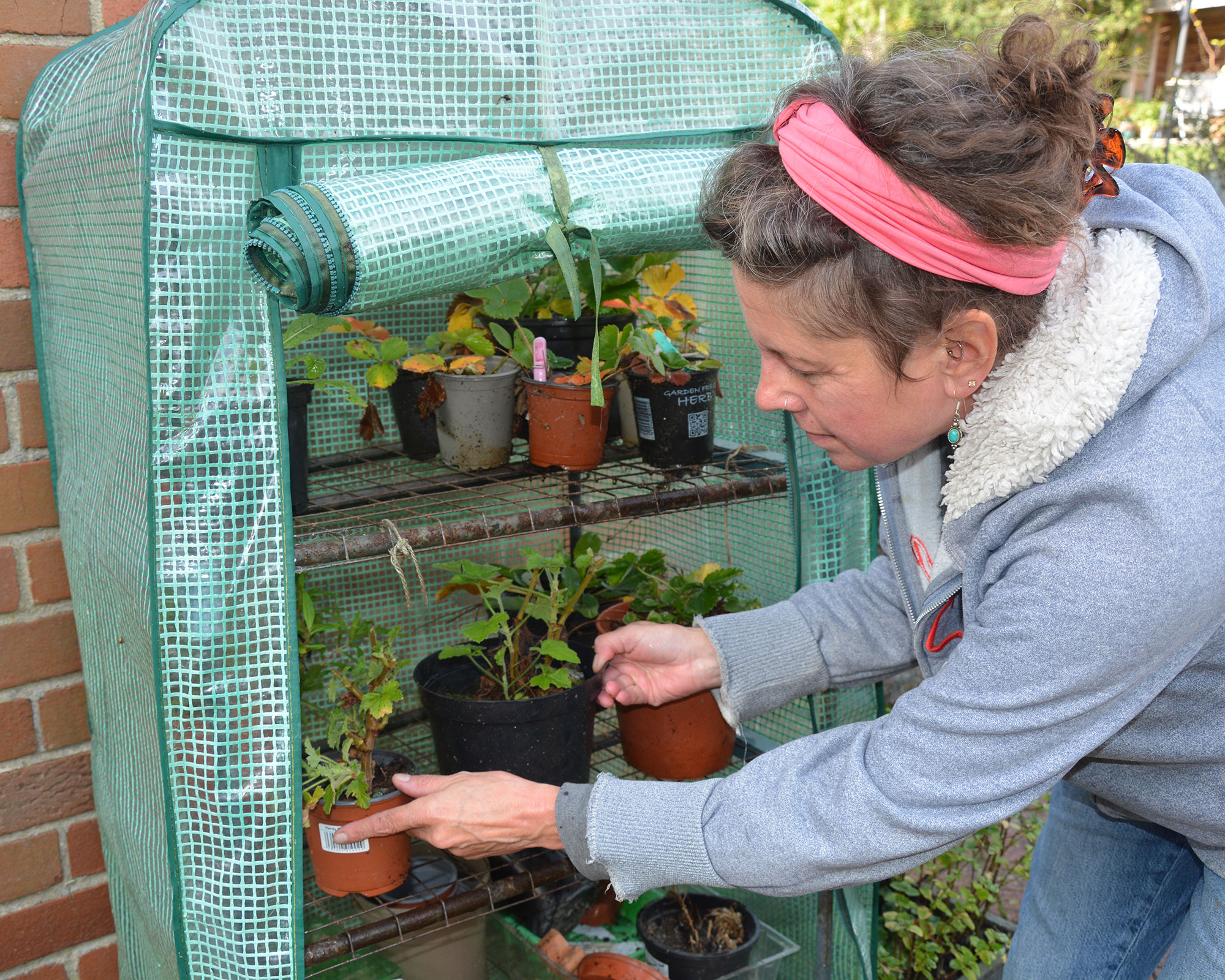
In milder areas you may be able to overwinter geraniums in a sheltered mini greenhouse
Simple tips for how to overwinter geraniums successfully
Overwintering geraniums is not difficult as long as they are kept safe from frosty conditions and spend the cold weather in a healthy, well-lit and well-ventilated spot.
Depending on where you live and whether you grow your pelargoniums in pots or in the ground, there are several things to think about when considering how to overwinter geraniums. Here, I'll talk you through the main methods, which should help you see your plants safely through the coldest months.
1. Cut back your geraniums before winter
Cutting back the summer's growth is a good idea before overwintering geraniums as it helps keep them healthy, and smaller plants with shorter branches take up less room so you can fit more of them into your greenhouse or on a windowsill.
Using a sharp, clean pair of pruning shears or secateurs reduce the branches to 4-6in (10-15cm). If you're wondering whether to use bypass vs anvil pruners for this job, bypass designs are your best bet.
If you fancy, you can also use the off-cuts as softwood cuttings. Taking cuttings from plants is a very simple form of propagation and acts as an ‘insurance policy’ if any of your mature plants die in winter.
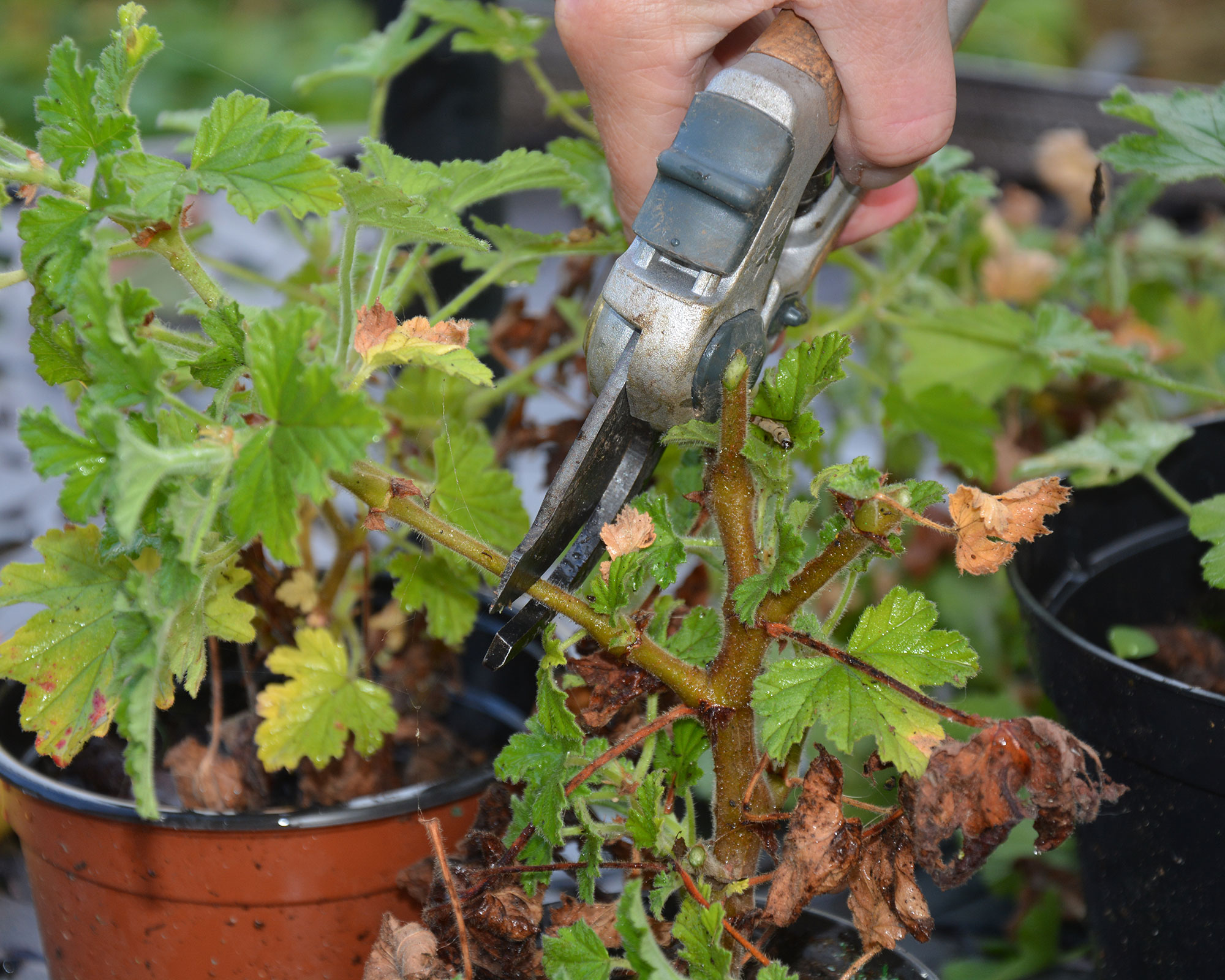
Cut back geranium stems to a healthy leaf bud before storing them through winter
2. Shelter your geraniums over winter
It's important to provide some sort of shelter or protection from cold temperatures over winter and there are a couple of ways you can do this.
The first option is to lift your geraniums from the soil and pot them up in multi purpose compost before storing them in a greenhouse, sheltered mini greenhouse or a cool, light windowsill indoors.
The second is for gardens in warmer zones where you may have large showcase plants as a part of your summer container ideas. If the planters are too large to move into a greenhouse, relocate them to a sheltered area of the garden.
Raise them up on feet so excess water can escape and be prepared to cover them with horticultural fleece or freeze protection, both available from Amazon, on very cold nights. Remove it when temperatures rise the next morning, otherwise it may trap condensation which can cause molds and rotting.
Do bear in mind that the risk of losing tender plants is always greater if they are left outside.
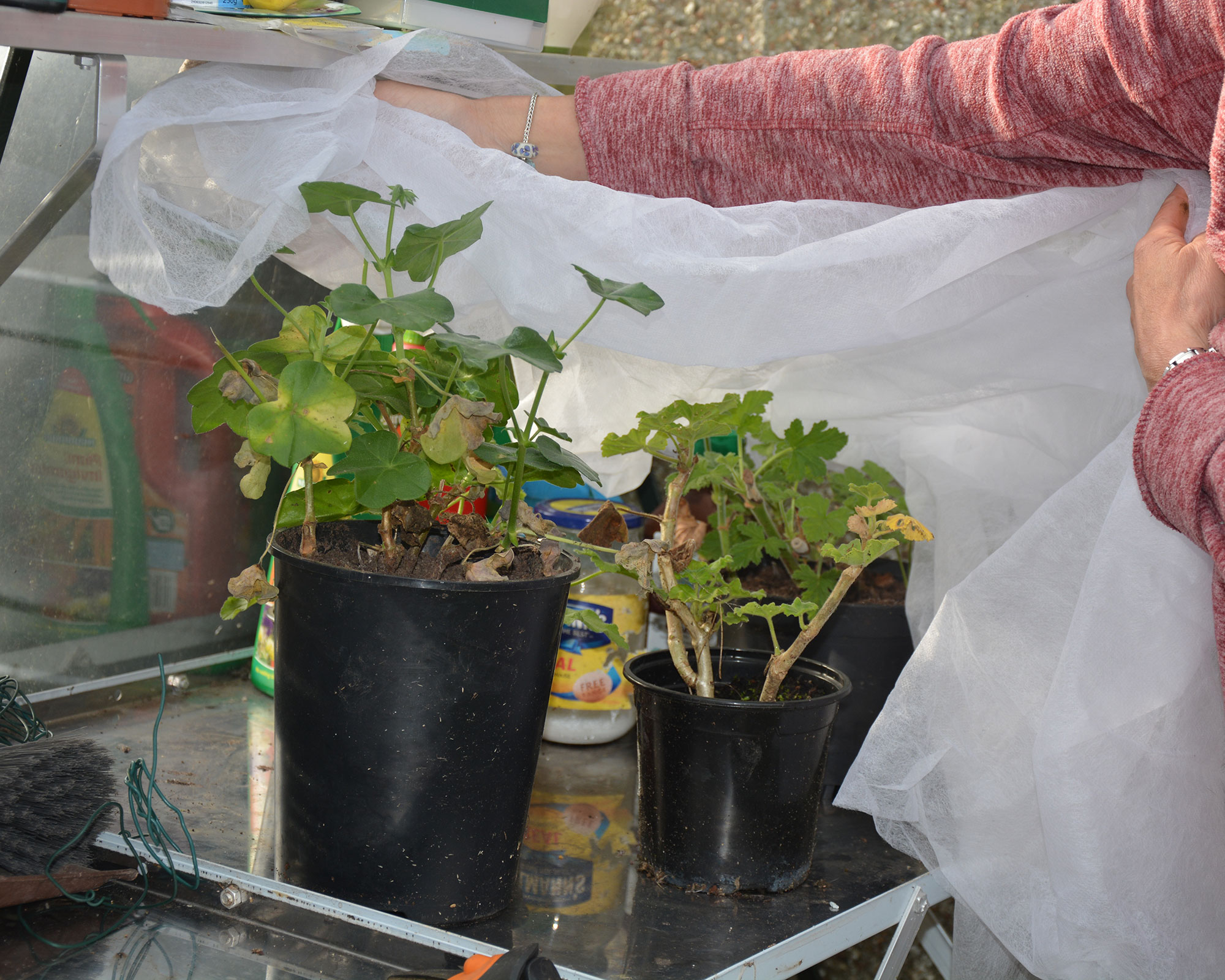
Use horticultural fleece or freeze protection plant covers to protect geraniums from very cold conditions
3. Provide ongoing care over winter to keep them alive
Once they are potted up and moved somewhere sheltered or frost-free for winter, overwintering geraniums is easy as long as you avoid a few pitfalls.
- Watering: Water geraniums when you pot them up, but after that they shouldn’t need watering again through winter because they are dormant and not growing. You can water plants to give them a small drink if they start to go limp, but this is unlikely to be necessary until late winter or early spring.
- Feeding: Fertilizing plants isn't necessary until spring when they start to grow again. Then give them a solution of general-purpose liquid fertilizer in water.
- Good airflow: Make sure your plants stay well ventilated through winter to keep fungal diseases such as Botrytis cinerea at bay. Open greenhouse doors and windows on milder days and close them at night when it starts to get chilly.
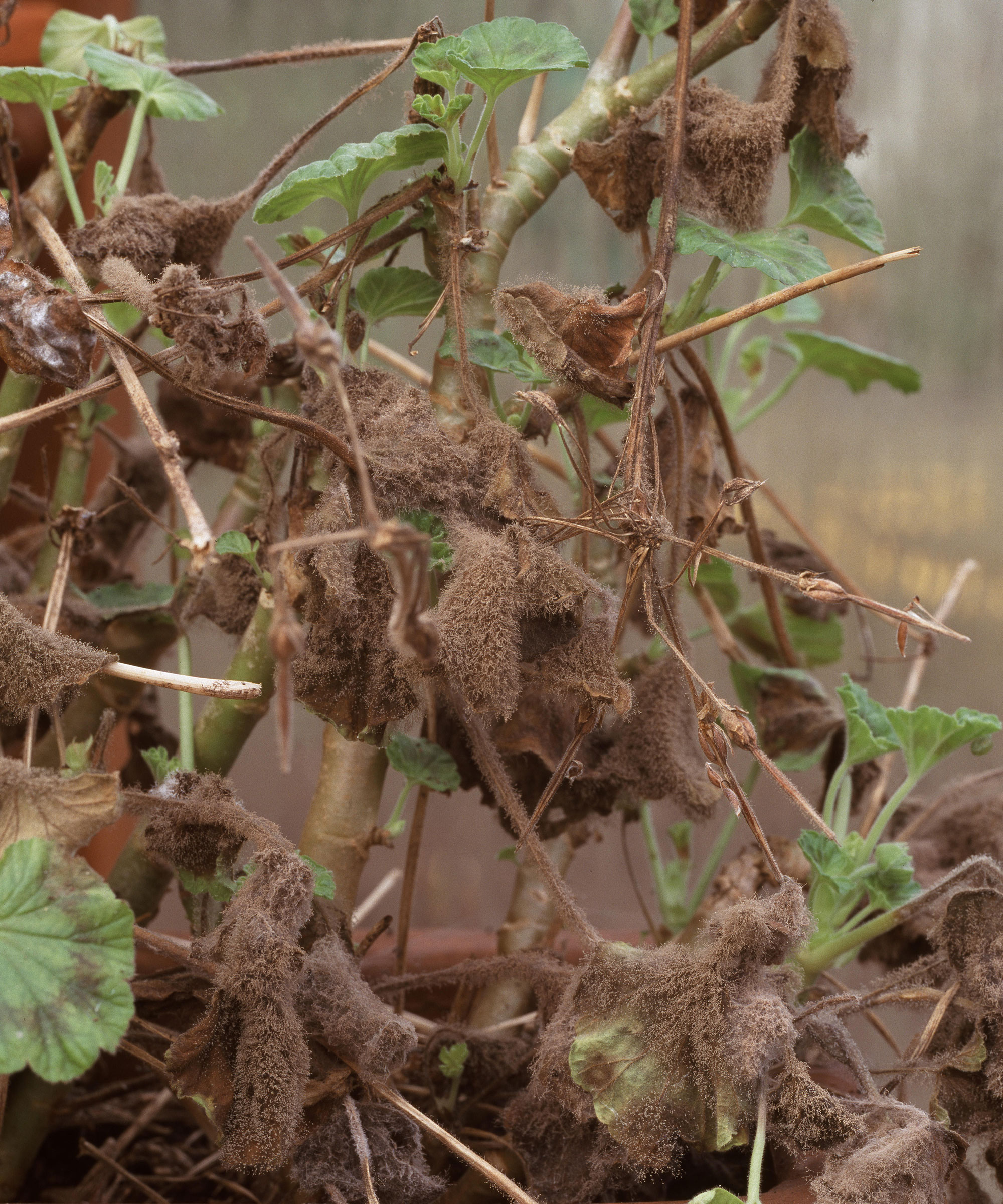
The fungal disease Botrytis can be a problem if geraniums are overwintered in poorly ventilated conditions
- Pests: A key part of knowing how to overwinter geraniums is to make sure you regularly check plants for pests that like to hang out in the warmth of a winter greenhouse. Be especially alert for aphids and mealybugs. Squish small colonies with your fingers or use an organic spray on larger infestations.
- Pinching out: Geraniums may start to grow again and even develop flower buds during mild spells and towards the end of winter. Unfortunately, flower buds take a lot of energy to produce and leaving them to open can deplete the plant of resources needed for summer growth, so pinch them off when you spot them.
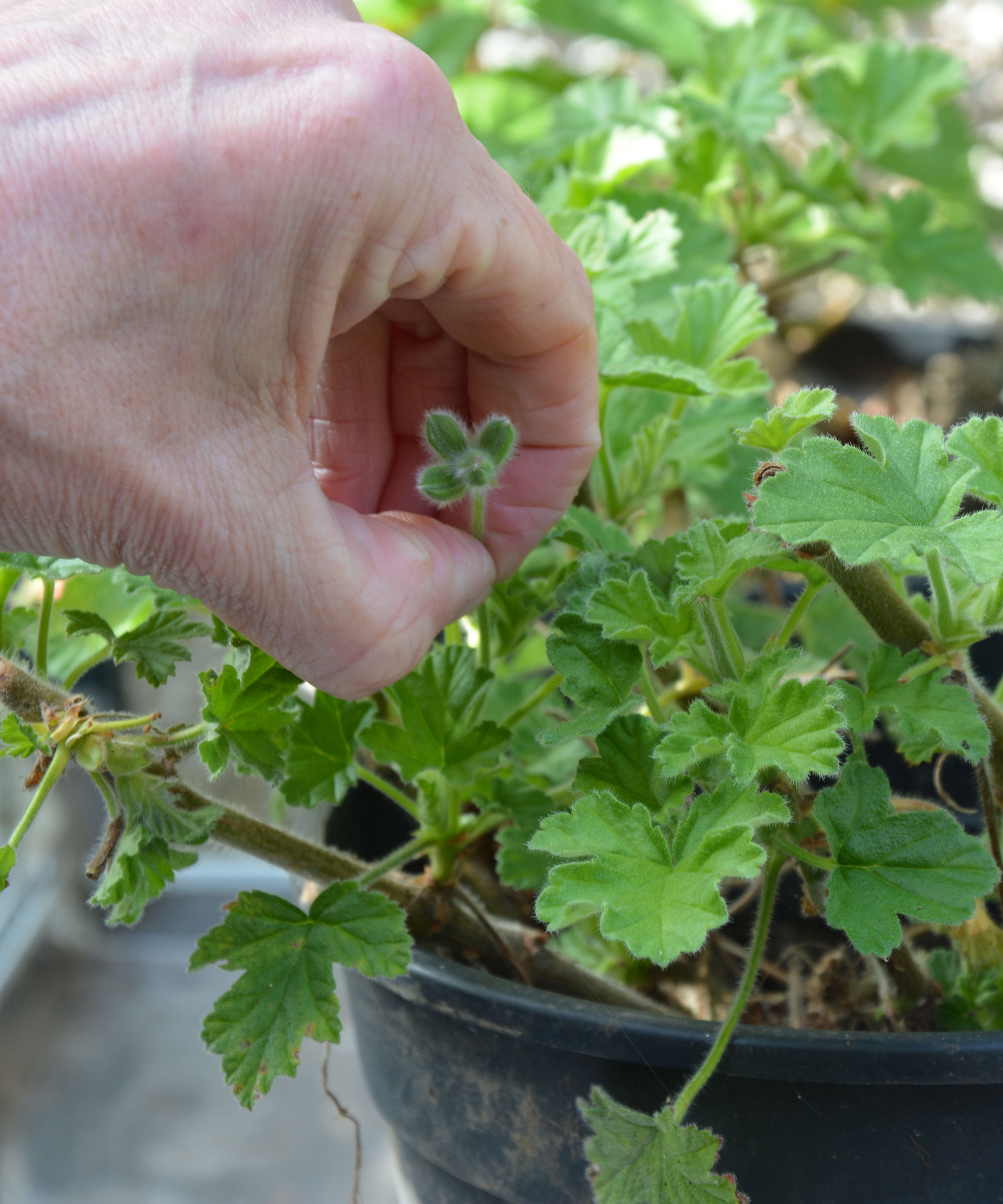
Pinch out early flower buds as they will only cause the plant to waste its energy

Ruth is the gardening editor of Amateur Gardening magazine and spends her working days carrying out, writing about and photographing the tasks the readers should be carrying out each week, as well as testing many of the new products that arrive on the gardening market. She is horticulturally trained, with a qualification from the Royal Horticultural Society.
